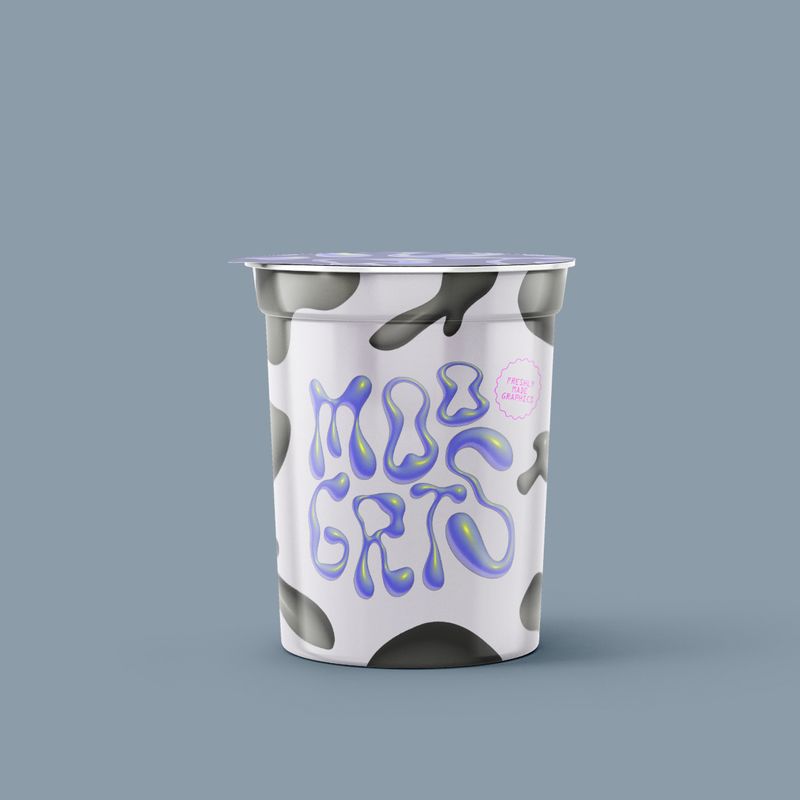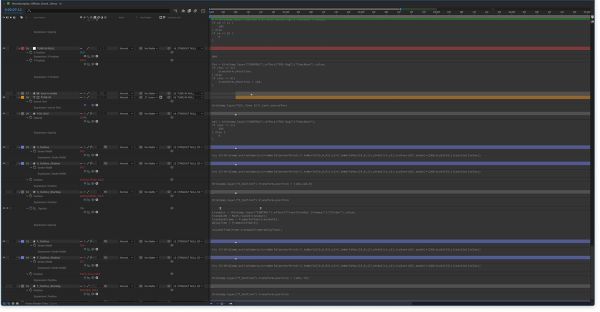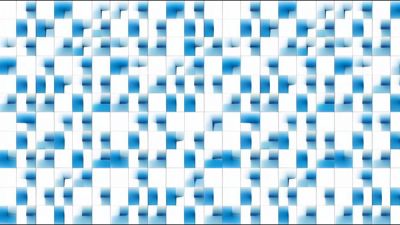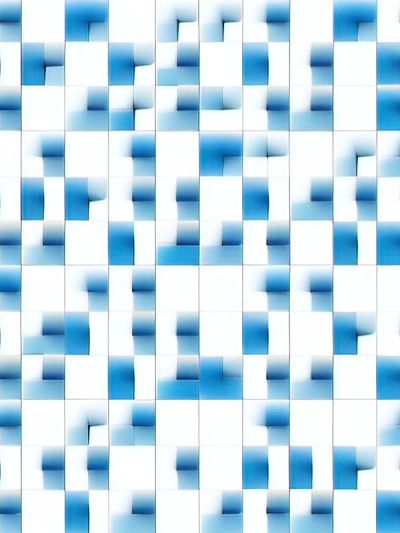
All About MOGRTs
MOGRTs are indispensable tools for motion graphics teams...but what are they, and what goes into building them? Junior Designer + Animator Tyler Rispoli breaks it down.
At Trollbäck, we pride ourselves on creating and delivering user-friendly motion toolkits that enable our clients' creative teams to work quickly with brand consistency. These toolkits are most often built in After Effects, but we've encountered many situations where in-house creative teams aren't staffed with After Effects artists and need a faster, more turnkey tool to create branded motion assets. This is why we've been building more MOGRTs in the past few years, allowing editors and non-designers to be creative and stay on brand with every video asset needed for social media, YouTube, and TV.
I can’t count the number of times a colleague or friend asks me what a MOGRT is. I always ponder what they think it is in their head…Motion yogurt? Jokes aside, it's the industry term for a MOtion GRaphics Template. Clients are asking for them left and right these days – but what are they?
Overview
MOGRTs (Motion Graphics Templates) are a file format used in Adobe Premiere Pro and Adobe After Effects to create and share motion graphics templates. These templates provide easy-to-use controls for video editors to customize and reuse pre-designed motion graphics elements for video projects. Using MOGRTs can significantly save time for video editors and motion graphics designers, as they can reuse templates across different projects and make quick edits without starting from scratch. The animations and effects created in After Effects are preserved in the MOGRT file, which means that even complex motion graphics can be easily incorporated into Premiere Pro projects. If you take the time to rig up a highly flexible system, you can save an internal team and/or editors hours down the road.
These templates allow us animators to rig something up in After Effects and share it with an editor or artist for use in Premiere or Premiere Rush. The receiving editor/s can manipulate graphics in a way that we define as presets. They can drop an element in the timeline and get access to customization tools for each asset separately. You can use multiple MOGRTs in a timeline with different properties adjusted on each one. Typical things to adjust are themes, colors, turning a logo on and off, and source text (adjusting a title or a name).
All MOGRTs show up in a library in Premiere after importing for instant project use (they will stay on the machine until deleted). Common use cases are logo animations, lower thirds, transitions, mortises, and so much more.
Why are these ’MOGRT” files so helpful?
MOGRTs provide editors with only the properties they need to adjust. In the essential graphics panel in After Effects, I can set up only the properties they need to adjust in the MOGRT asset. There is no digging through endless layers to find the one text layer you need to adjust. A MOGRT allows an artist to just type what they want it to say in the essential graphics panel, and it updates an animation instantly. A client can lock down brand colors, which is helpful for parent brands with many sub-brands. A good recent example is our toolkit for FOX, which has many affiliate channels with their own systems, where we restricted the options to changing text and footage only. This prevented the affiliates from altering parent brand shapes to their own station colors, which risked diluting brand recognition for FOX. With a well-designed MOGRT, editors are limited to pre-set options and won’t be able to start changing colors and keyframes in After Effects so that every output remains consistently on-brand.
Needless to say, MOGRTs hold a lot of power in one file. It’s important to consider the needs of the clients or artists on the project side. For me, building a MOGRT is less about the process and more about the final working file. Spending time making a file that will speed up a client’s workflow is instantly a win; time is everything nowadays. MOGRTs won’t be helpful in every scenario where After Effects is truly needed for a complex toolkit, but they can be built with as much simplicity or complexity as I want them to be.
Returning to the FOX example, within our many deliverables was the request for an Affiliate (i.e., Sponsor) Menu, Interstitials, and Transitions as MOGRTs for various teams and stations around the country to use directly in Adobe Premiere. When building a MOGRT, I always ask a producer, client, or both on MOGRT specifics as a first step. The most important thing about a MOGRT build is which controls should be included and which controls should be locked down. Depending on the client's needs, artists might require more or less room to play or have adjustments tightly controlled. This is the most interesting part of MOGRT-building. It’s like building a car, where everything must work together to run smoothly, but different options can be added or removed to make it more powerful. I’ve learned to experiment and lean on peers for the best way to set up certain aspects. At the end of the day, there is never just one way.
The FOX Affiliate Menu:
The Affiliate menu was the most robust MOGRT in our recent brand refresh package. At only 200mb, it allowed for endless customization. We developed it in a way that allowed for customization while locking down a few parameters.
On the 1-show, we enabled artists on the client side to adjust type quickly, turn elements on and off, and adjust the length of the menu. Additionally, we set up drop zones for stations and show logos. This allowed artists to open the essential graphics panel in Premiere, see only what they needed to adjust, and then get right to work. On the multishow version, we allowed many of the same adjustments with 2-4 additional parameters based on the promoted show type. I enjoy this aspect of MOGRTs because there’s no more digging through compositions or unzipping huge After Effects files. It’s all in Premiere with the tools at the forefront. No matter what you type or toggle in these MOGRTs, the file is repsonsive to user inputs.
The Interstitials and Transitions:
The FOX Interstitials and Transitions were intended to be functional with fewer adjustment parameters. We built these to easily drop in footage, replace text elements, and adjust colors. It’s a faster workflow—I can’t imagine having to open After Effects every time just to change one piece of type or footage if I was already working in Premiere and on a deadline. This is one of the reasons why I like building a quick MOGRT that can flex and be used across many deliverables.
My goal is to set things up in an easy-to-understand, user-friendly way. When building MOGRTs, it’s important to label all controls intuitively with empathy for the artist who is using the toolkit. I always add a comment or note in the essential graphics panel in After Effects so that information is clear within the MOGRT. For example, in the Affiliate Menus, we added groups for each set of text controls for each show title. This begs the question I often get with MOGRTs: “Are they difficult to create?” They can certainly get complex on the animation side, but we make sure to do the extra work to make each element straightforward and accessible, as illustrated below. We use custom Expressions to rig elements so that every control works with one another. This takes time in the building phase but pays off for clients. Artists can work faster and don’t need to have a complex understanding of After Effects or even graphic design.

On the flip side, MOGRTs don’t always need to be complex. For example, they can be a simpler means to swap out footage behind a graphic mortise and select from different colorway options. After building a few, I realized just how powerful they are—so simple that in 10 minutes, I can set up and export a new MOGRT to automate a quicker workflow for the future.
Here are some of my most common questions at the beginning of a process, which are important to keep in mind for the design and production process:
—What’s our end goal?
—What does the client want to accomplish?
—How many colorways do we need to build in?
—What parameters need to be changed vs what needs to be locked down?
—How can we build it in the lightest/cleanest way possible in case we need to update?
—Would it be useful to animate a master file for approval before building the MOGRT?
Explore more
New business inquiries.
How can we help?
NYC 02:23
STK 08:23
LA 11:23
Get our newsletter
Sign up for updates,
insights, and inspirations
from our studio.




